Visual perception, raster displays
CS 248 - Introduction to Computer Graphics
Autumn Quarter, 2006
Marc Levoy
Lecture notes for Thursday September 28
Table of contents:
- Raster displays
- Spatial resolution - How many pixels do we need?
- Frequency sensitivity - sine wave gratings
- Phase sensitivity - vernier acuity
- Temporal resolution - How many frames per second?
- Intensity quantization - how many bits per pixel?
Note:
There is more detail in these notes than I covered in my lecture today, mainly
on the topic of CRTs. As I mentioned in class, I am gradually cutting back my
coverage of that increasingly obsolete topic. You are not responsible (e.g. on
the exams) for material I don't cover in class. For most classes, the written
notes will follow the lectures more closely.
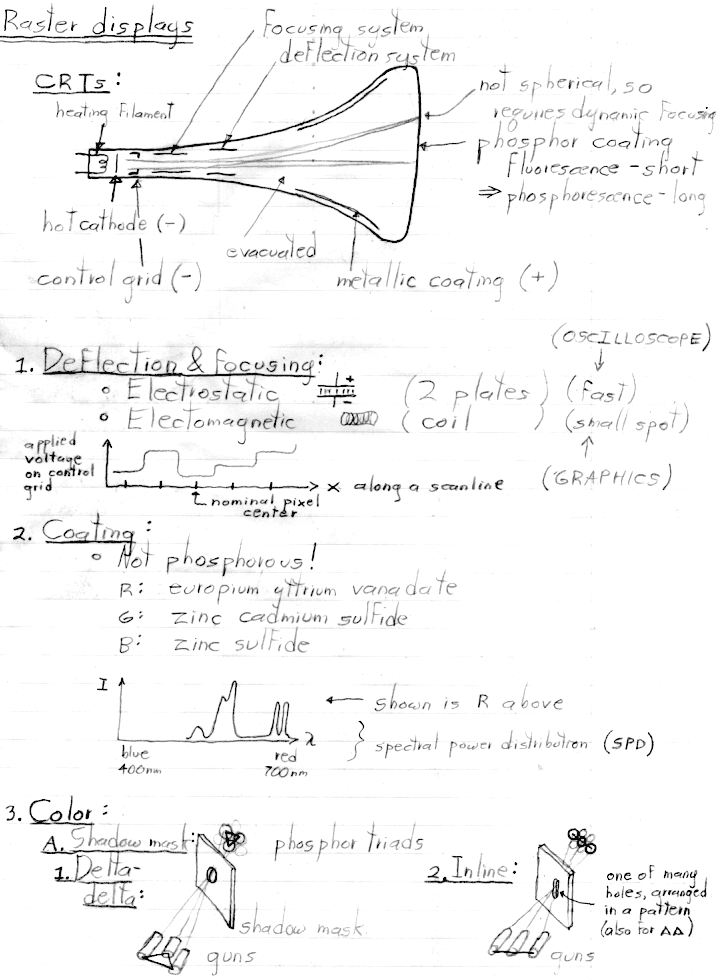
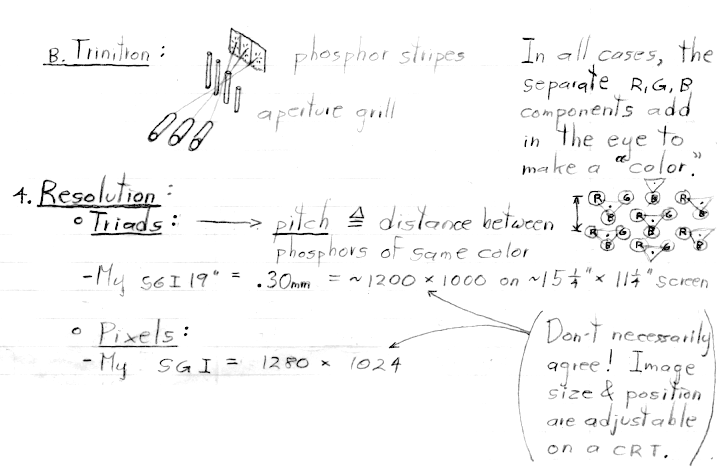
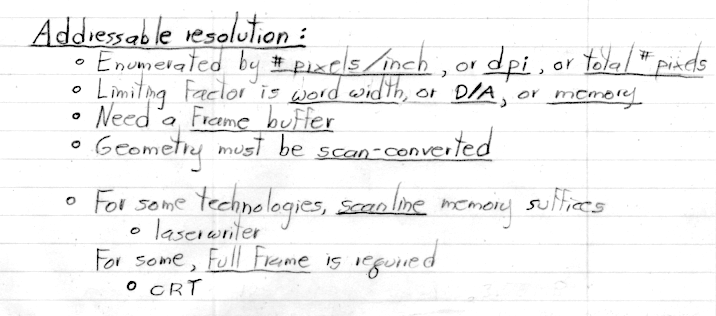

Press here for the Powerpoint slides I showed in class
about triads and pixels (
PPT or
PDF).
Reiterating the explanation I gave in class, in the case of the integral pixel
font on the LCD, the pixel outlined in yellow is blackened because the stroke
covers more than some threshold percentage of the pixel's area; otherwise, it
would have been left white. Blackening the pixel turns all three of its color
stripes (R,G,B) black. In the antialiased font, the outlined pixel is darkened
in proportion to the percentage of the pixel's area that covered by the stroke.
Again, all three of its stripes are darkened equally. However, notice that the
stroke covers only the red stripe (mostly) and the green stripe (partially); it
doesn't cover the blue stripe at all. The subpixel font takes advantage of
this fact by adjusting the color of the pixel such that each of its three color
stripes are darkened in proportion to the percentage of that stripe's area that
is covered by the stroke. Thus, the red stripe is darkened the most, the green
stripe is darkened only a bit, and the blue stripe is left untouched. This
combination of darkenings corresponds to some RGB color, which is loaded into
the frame buffer for this pixel. Thus, the three color stripes within a pixel
are not individually "addressable" in the sense of having their own
coordinates; they are addressable by employing the trick of adjusting the color
displayed in that pixel.
As I mentioned in class, subpixel font rendering technology only works if the
alignment of pixels to color stripes can be guaranteed. In other words, it
works on an LCD, but not on a CRT. My example assumes that the text is black
on a white background, but the technology also works for a colored text and/or
background. Of course, if the text is pure red on black, then we have only the
red stripes to play with, and subpixel fonts gain you nothing. By the way,
it's hard to properly explain this technology before we've covered
rasterization and antialiasing. It would be worth your while to come back and
take a second look at this slide in a few weeks.
For more information on this fascinating
technology, look at http://grc.com/cleartype.htm.
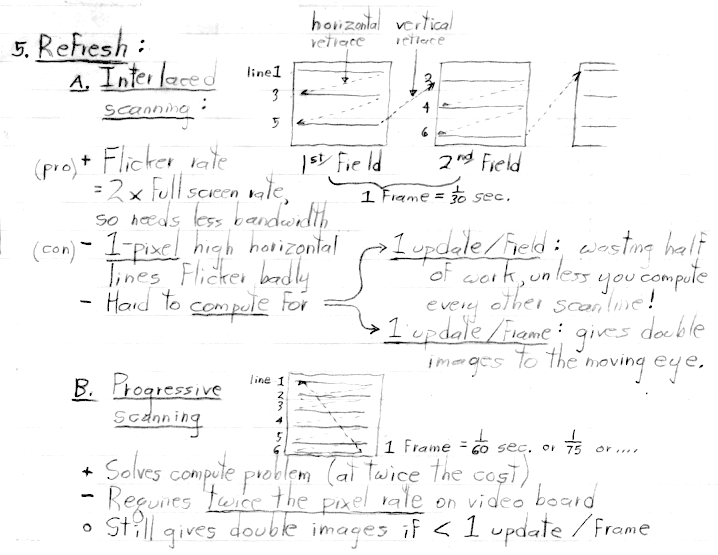

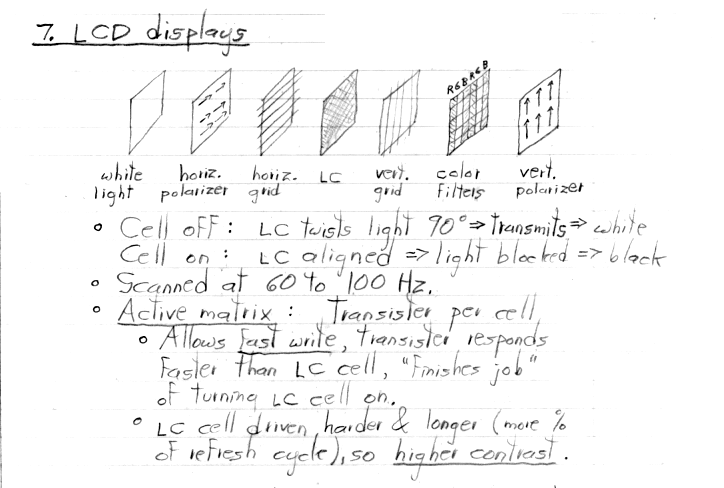



Section D requires an understanding of Fourier analysis, which we won't cover
until Oct. 6, but in case you're interested...
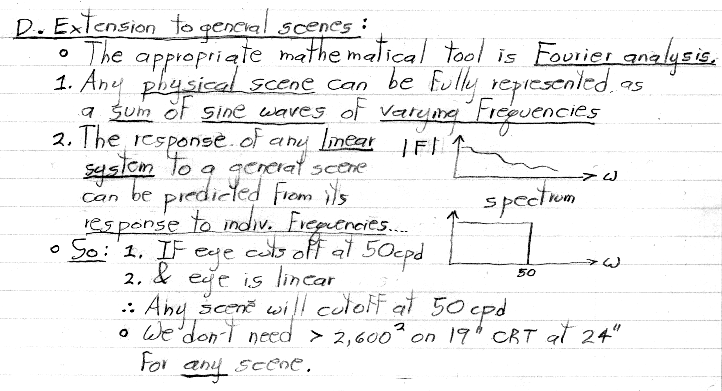
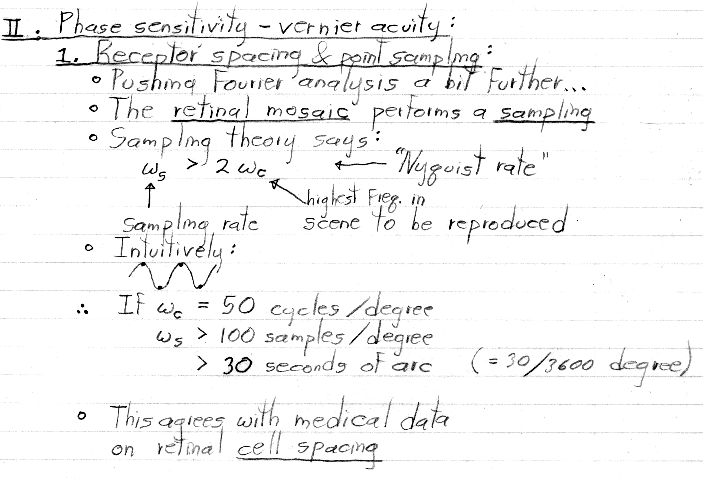
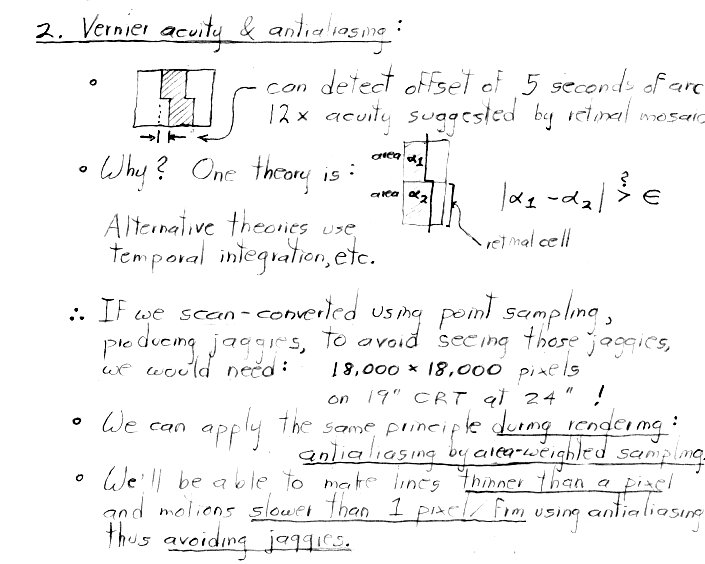
I covered part I (flicker sensitivity) when I discussed persistence in CRTs. I
didn't cover parts II or III, but the ideas are obvious. As I said, you are
not responsible on the exams for material I don't cover in class, and for most
classes, the written notes will follow the lectures more closely.
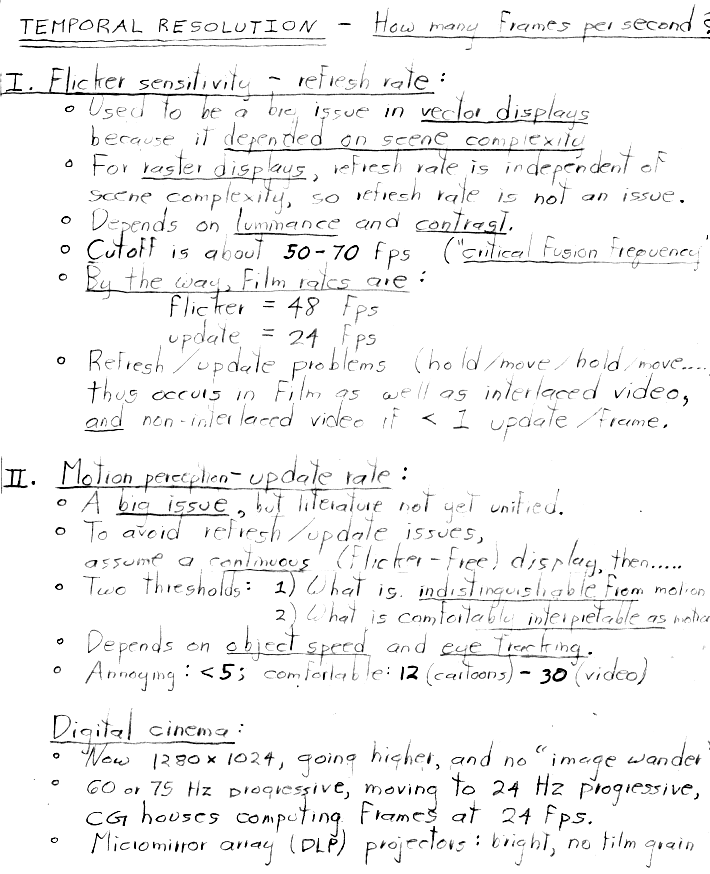


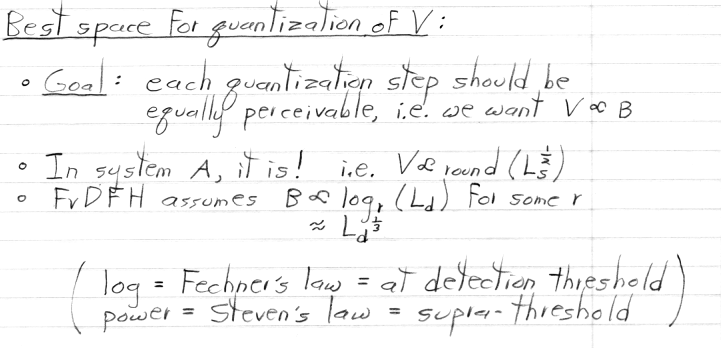
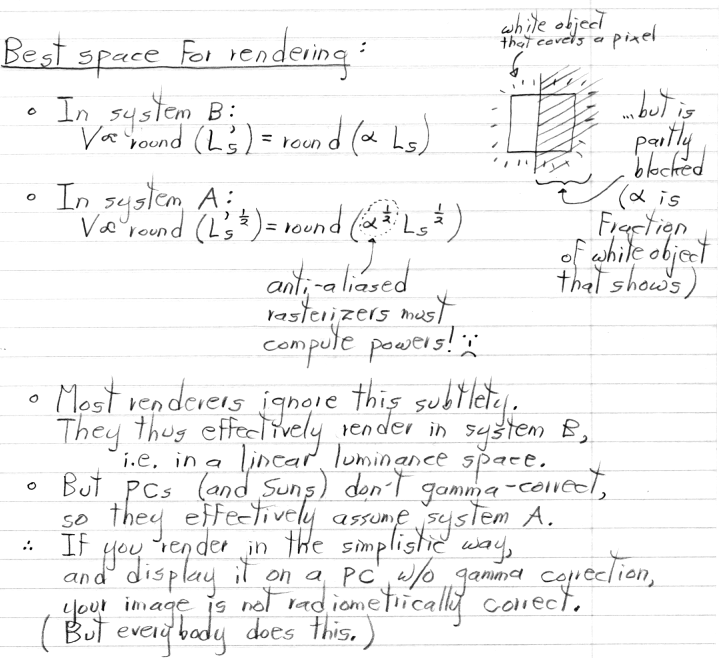
So how many bits do we need per pixel?
Click here to see a
demo that addresses this question.
Make sure you view this demo on a gamma-corrected monitor,
as the instructions say.
levoy@cs.stanford.edu
Copyright © 2006 Marc Levoy
Last update:
October 3, 2006 08:06:38 PM




















